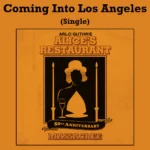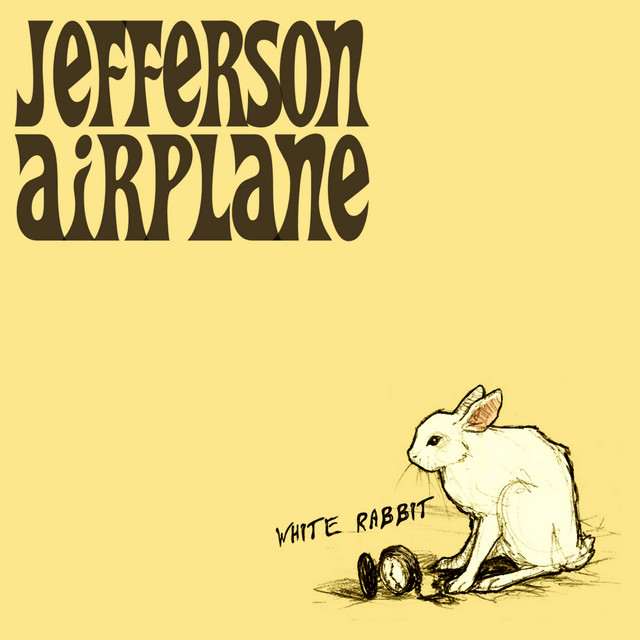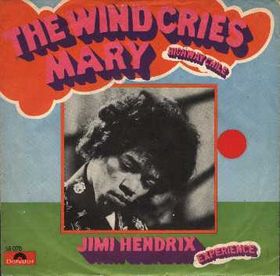 There’s a certain type of song that instantly transports you into a moment—one that feels both rebellious and strangely joyful, a tune that captures the essence of an era without even trying. Arlo Guthrie’s “Coming Into Los Angeles,” released in 1969, is one of those rare tracks. It’s a song with a wry grin and a raised eyebrow, a tune that strolls into the room with a guitar slung over its shoulder and a story that may or may not be true. It’s playful, mischievous, and unmistakably tied to the counterculture currents of the late ’60s. Yet beneath the humor and laid-back rhythm is a snapshot of a decade defined by questioning authority, challenging norms, and celebrating a new kind of musical storytelling.
There’s a certain type of song that instantly transports you into a moment—one that feels both rebellious and strangely joyful, a tune that captures the essence of an era without even trying. Arlo Guthrie’s “Coming Into Los Angeles,” released in 1969, is one of those rare tracks. It’s a song with a wry grin and a raised eyebrow, a tune that strolls into the room with a guitar slung over its shoulder and a story that may or may not be true. It’s playful, mischievous, and unmistakably tied to the counterculture currents of the late ’60s. Yet beneath the humor and laid-back rhythm is a snapshot of a decade defined by questioning authority, challenging norms, and celebrating a new kind of musical storytelling.
What makes “Coming Into Los Angeles” so charming is the way it balances danger and levity. It’s a drug-smuggling narrative delivered with a shrug. It’s a folk song powered by rock energy, created by an artist whose lineage alone—being Woody Guthrie’s son—gave him an instinct for chronicling American life from unusual angles. When the song plays, you’re instantly placed in an airplane seat beside a guy who’s clearly up to something, humming along as customs agents stroll past. And for all its implication of risk, its tone stays so relaxed that the entire thing feels like a half-true tale told at a party long after midnight. That blend of tone, timing, and storytelling has kept “Coming Into Los Angeles” vibrant for more than fifty years.
A Song Built on a Groove, Not a Lecture
Arlo Guthrie has always had a gift for mixing humor with social commentary. Unlike his father’s dust-bowl ballads or the protest songs that filled the early ’60s folk revival, Arlo often leaned into playfulness and irony to make his points. “Coming Into Los Angeles” is a perfect example. On the surface, it’s a fun, catchy tune. Listen closer, and you realize it’s a quiet critique of the absurdity and paranoia surrounding drug enforcement during a turbulent cultural shift.
Musically, the song stands out instantly. There’s a tight, casual groove that drives everything forward—part folk, part rock, part blues. The guitar riff is simple but sticky, sliding into your memory on the first listen. The bass line gives the song a warm bounce, while the percussion adds that relaxed, rolling motion reminiscent of a road trip or an airport terminal stroll.
And then there’s Arlo’s voice: loose, conversational, slightly amused. He sings like a guy recounting something that happened earlier that day, more interested in the bizarre details than in framing himself as any kind of outlaw. That delivery is essential. The song never feels preachy, edgy, or worried—it floats. The levity makes the danger almost invisible, which ironically makes the storytelling all the more effective.
Transporting the Listener Into the Story
The opening lines drop you right into the action:
“Coming into Los Angeles
Bringing in a couple of keys.”
No warm-ups, no exposition—you’re already on the plane, already breaking the law, already running a risk that should make your palms sweat. But the genius of the song is that it doesn’t heighten your anxiety. Arlo’s tone is so casual, so breezy, that the act of smuggling marijuana becomes almost comedic.
Every verse introduces another colorful scene or character. There’s a woman with flowers in her hair, a man sleeping in his seat, a customs agent unaware of what’s happening right under his nose. It’s almost cinematic, yet not in a dramatic sense—more like a slice-of-life moment from a stoner comedy decades before that genre really existed.
Guthrie’s storytelling is tight and efficient. He gives you just enough detail to paint the scene, then lets your imagination fill in the rest. The song moves briskly, like a traveler making his connection before the gate closes.
The Cultural and Historical Context
To understand why “Coming Into Los Angeles” became so iconic, you have to consider the year 1969. America was deep in cultural upheaval—Vietnam protests, the rise of the hippie movement, generational clashes, and a growing distrust of government. Music wasn’t just background noise; it was the heart of expression, protest, and identity for millions.
Arlo Guthrie was already known for “Alice’s Restaurant,” his sprawling 1967 talking-blues satire that skewered bureaucracy, the draft, and the absurdity of authority. Fans expected wit, honesty, and a countercultural lens from him. “Coming Into Los Angeles” delivered all that, but packaged it in a much tighter, catchier form.
And then came Woodstock.
Arlo performed “Coming Into Los Angeles” at the legendary 1969 festival, and though his set wasn’t perfectly polished—the monitor issues, the weather, and the chaos of the moment all played a role—the song became forever linked to the spirit of that event. When the Woodstock soundtrack album came out, the track was included, introducing it to millions who hadn’t heard the studio version.
That placement immortalized it. Suddenly, “Coming Into Los Angeles” wasn’t just a clever tune about smuggling weed—it became a symbol of the entire counterculture moment.
A Song That Doesn’t Moralize
One of the most fascinating aspects of the track is that it never tries to tell you what to think. Songs about drugs often fall into one of two categories: glamorization or cautionary tales. Guthrie’s song is neither. There’s no declaration of freedom or rebellion, no moral panic, no anti-establishment rant. It’s simply a story—a humorous, almost mundane description of a criminal act that goes off without a hitch.
That detachment is what makes the song so effective. It mirrors the attitudes of many young people at the time who saw marijuana not as rebellion, but as part of everyday life. To them, the elaborate fear and surveillance systems built around it were more ridiculous than dangerous. Arlo’s song captures that sentiment perfectly. He’s not trying to incite or condemn—he’s just telling you what happened, and if you want to laugh, that’s your choice.
Woodstock, Mythmaking, and Musical Legacy
While the studio version is polished and punchy, the Woodstock performance is the one that became legendary. On the festival recording, Arlo sounds loose, slightly frazzled, and incredibly endearing. His voice wavers, the mix is imperfect, and yet the vibe is exactly right. The song seems almost written for a scene like that—muddy fields, exhausted concertgoers, and an energy that felt like freedom mixed with exhaustion.
That performance cemented the track in the public consciousness as a quintessential Woodstock moment. It wasn’t angry like some of the protest songs that filled the festival. It wasn’t psychedelic in the way many rock acts were. It was something in between—playful, subversive, slightly chaotic. It reflected the festival itself.
After Woodstock, “Coming Into Los Angeles” became one of Guthrie’s signature songs. Fans expected it. Concerts weren’t complete without it. And the song began to appear in films, TV shows, and documentaries about the era, usually serving as shorthand for that specific moment in history when music and youth culture became inseparable.
A Musical Structure That Moves Like a Traveler
From an instrumental standpoint, the song is deceptively simple but incredibly effective.
The guitar gives the song its forward motion, strumming in a relaxed but consistent rhythm. The bass lays down a steady, almost hypnotic line that defines the groove. Light percussion fills the space without overwhelming it. Even the subtle touches—like the slight twang in certain guitar fills—give the song a sense of journeying, of crossing borders both literal and metaphorical.
The melody is catchy but not melodramatic. It mirrors the protagonist’s attitude: steady, calm, and focused on not attracting attention. Every element of the arrangement reinforces the storytelling. It’s music built to move.
Playfulness with a Subversive Edge
Another reason the song works so well is its playful use of language. Guthrie never says too much. He never over-explains. He drops phrases like “couple of keys” and trusts the audience to understand. He mentions customs agents and strangers on the flight without weaving too much narrative. It’s minimalist, but intentional.
That restraint gives the song its coolness. It refuses to brag. It refuses to panic. It exists in the sweet spot between comedy and tension—a place where anything could go wrong, but probably won’t.
This tone became something of a trademark for Guthrie. He was a storyteller who preferred to highlight the absurdity of life rather than its anger. While other artists of the era were writing fiery protest songs, Arlo was leaning into sly humor and gentle rebellion.
Why “Coming Into Los Angeles” Still Resonates Today
More than fifty years later, the song still feels refreshing. Modern listeners may not be smuggling “a couple of keys,” but the spirit of the track remains relatable—a blend of mischief, nonconformity, and surreal everyday chaos. It’s a reminder that some of the most powerful cultural statements aren’t shouted from rooftops—they’re told as stories, shared with a smile.
The song also represents a moment when American folk music was evolving. The boundaries between folk, rock, and blues were dissolving, and artists like Guthrie were leading the way. “Coming Into Los Angeles” is folk music with an electric heart, storytelling with a beat.
Its legacy isn’t defined by controversy or shock value. Instead, it lives on because it’s fun, memorable, and genuinely unique. It has personality—something not every song can claim.
Final Thoughts: A Counterculture Tale That Keeps Traveling
“Coming Into Los Angeles” remains one of Arlo Guthrie’s greatest contributions to American music. It’s a song that captures the humor, the tension, and the spirit of 1969 without ever raising its voice. It’s rebellious without preaching, adventurous without being dramatic, and funny without being silly.
Most importantly, it’s timeless. Its groove is irresistible, its storytelling is sharp, and its place in cultural history is unquestionable. Whether discovered on a classic rock playlist, a Woodstock documentary, or an aging vinyl record with worn edges, the song still works its magic.
Arlo Guthrie wasn’t trying to be a hero or a symbol when he recorded it. He was just telling a story. But in doing so, he created one of the great musical snapshots of the counterculture era—cool, clever, and forever moving through the world with a grin.
And like the smuggler in the song, it continues to slip through the decades with ease, untouched by the customs of time.


